Every business seeks viability. Period.
The viability of ideas, processes, outcomes, future plans, and everything that makes sense for the business. Talking about digital transformation, Minimum Viable Product (MVP) is yet another test for the viability of one’s product or just an idea.
This article tries to answer every concern you wish to know about a Minimum Viable Product.
What is a Minimum Viable Product?
Minimum Viable Product, or MVP for short, is a term used for the process of building an idea into a product with minimum features that exhibits the full functionality. The product thus made is enough to understand the need of the market, its adaptability, and whether the product is viable on its own.
The key here is to build a complete product that works to solve the user’s problem without overwhelming them with too many features at once that they may not use or need.
This approach saves appropriate development time, testing times, cost, and market turnaround time.
How to start transforming your ideas into MVP?
Building an MVP is not different from building a full-fledged application or software for an idea. Apart from brainstorming what all features will make a cut in the initial version of MVP, all other steps in the process are the same as that of a web or mobile application development.
There are popular product development methodologies that are followed by technology companies, namely, Agile, Lean, Kanban, Waterfall, and Six Sigma. These details are out of scope here, but you can read about them in our different blog – Types of Product Development you should know.
- Planning – Involves planning the scope, documenting the SRS, creating high-level user stories, estimating timelines, and kick-off the MVP design.
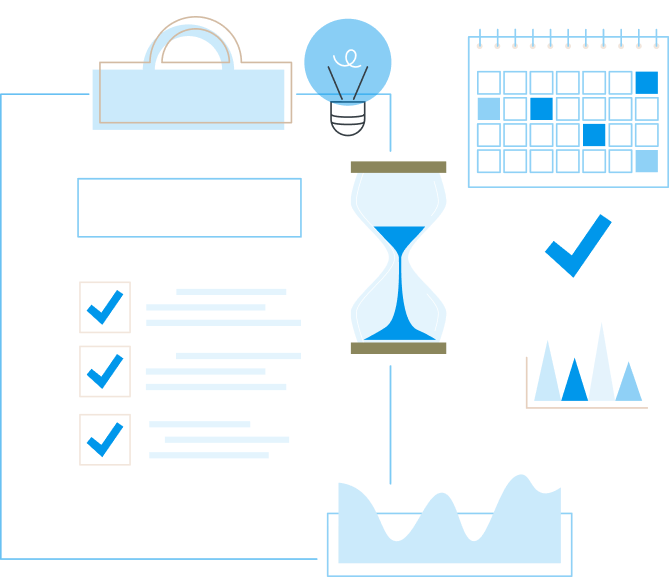
2. Prototyping – The MVP design is put forward in the form of rough sketches and wireframes using Sketch, Adobe XD, Figma, and Adobe Photoshop.

3. Development – implementing the wireframe and prototype, using technologies and varied computer languages, into a functional MVP.
4. Testing – the process is guided by set procedures and standard documents such as test plans, test cases, and strategies.
5. Delivery – series of processes to hand over MVP application resources to the client for accessing and marketing.
6. Support – post-launch support for technical issues, consultation, product enhancement, and troubleshooting.
Usually, MVP building takes between 60-90 days for the product's final launch.
Can every idea be transformed into an MVP?
Yes. Almost every idea can be worked upon to begin as an MVP. However, this takes a lot of brainstorming and understanding to decide on the basic minimal features that could be added to the product's first version.
The MVP development partners play a significant role here. Based on their experience in the domain, technology support, and product needs, they will provide a "Solutions Document" with high-level system requirements specifications.
Platform like Anuyat's, www.getanmvp.com, can also be used to submit the basic product requirements. It is helpful to get an expert consultation over what needs to be added versus what needs to wait for the next product release.
Does MVP approach vary with industry?
It does, with little variations in the assessing product requirements, use of technology and the users of the product.
For instance, an MVP for the Education sector needs to take at least 4 roles into consideration, while Fintech can begin with 2 roles to prove the concept.
Here are the considerable factors while designing MVP for different industries:
- What are the minimum number of roles interacting with the product?
- What are the essential performance parameters? Check all permutation and combination for speed, accuracy, scalability, data load, etc.
- What is the nature of competition in the domain market?
- What are the expectations and problems of the target users?
- What technology is best suited for the product’s development?
What is a minimal viable product example?
There are many well-known digital products which have started as an MVP. To name a few, WhatsApp, Facebook, AirBnb, Amazon, Dropbox, Foursquares, Zappos, Groupon, and more.
Some of the growing MVP products that we know and as SaaS company, have worked upon:
- Prismanote – an ECommerce platform, based in Netherland.
- FitToday- A Kids wellness platform, by a 12-year-old from US.
- Vitalize – An award winning wellness platform for Clinicians, by Grad Students in US.
- AskHow – a one-to-one tutoring platform, from TVMLearning, London.
How do you measure the success of an MVP? - Part 1
When we say the success of an MVP, the first part focuses on how an MVP is developed in time, bug-free, and efficiently functional. Also, how correctly it represents the intentions of the idea for the product is another measurable parameter of the MVP’s success.
How do you measure the success of an MVP? - Part 2
The second aspect of measuring the success of an MVP covers the post-launch of the MVP product into the target market. The metrics vary for mobile and web applications; the following addresses for both the categories:
- Download and Launch rate – Total 500 million Downloads for Whatsapp, one year after its launch
- User ratings and store placement
- Customer acquisition cost (CAC)
CAC = Amount of money spent on traction channel / Number of customers acquired through this channel
- Percentage of active users - WhatsApp had five million active users one year after the launch of the app.
- Percentage of paying users
- The monthly average revenue per user (ARPU)
ARPU = Total revenue for month / Number of active users this month
- Customer lifetime value (CLV)
CLV = Profit from customer x How long have they been using your app – Acquisition cost
- Churn = Number of churns per week (month) / Number of users at the beginning of the week (month)
Here, by MVP success, we do not mean whether or not the target user group likes the idea's existence. However, MVP can help get all kinds of feedback in an early stage of the idea, so that owner of the MVP can work on the improvement of the product.
How do you define MVP scope?
Scoping means assessing or investigating the possibility of something. MVP scope is defined by determining the values of three possible areas:
- The cost of building
- The time to build
- The modules/features for the first release
The above are considered as the higher level of scoping. As we proceed further, the scope of an MVP is divided into mini-deliverables, such as the scope of every individual module, the weekly timelines, third-party integration costs.
When you start to estimate the scope of your idea with our platform, the step-by-step screens will pose MVP-relevant questions, resulting in the customized scope of the product.
What are the types of Minimum Viable Product?
MVP’s sole motive is to gain users' feedback & gradually, trust. An MVP can be just a landing page to invite applications to join the community or a mobile application to allow people to place a single order from multiple restaurants.
Categorically, MVP is broadly classified under two categories:
- Low-Fidelity MVP
This type includes developing the MVPs to better understand the customer’s problem and its most effective solution. Popular examples are customer interviews, blogs, landing pages, forums, explainer videos, and paper prototypes.
2. High-Fidelity MVP
This type of MVP’s primary focus is to find early adopters of the product who are willing to pay and spread the word in the community. Examples are Digital Prototypes, 3D Models, Single-featured MVP, and crowdfunding.
How is Minimum Viable Product related to Prototype ?
MVP and prototyping are inseparable yet quite different from each other. While developing a prototype, we are more inclined toward “how” rather than the “what” part of the product.
MVP is based on the Lean product development principles (popularized by Eric Ries in his book “The Lean Startup”). Hence, MVP starts with understanding the minimum features enough to prove the idea, rather than building a prototype of how the idea will work.
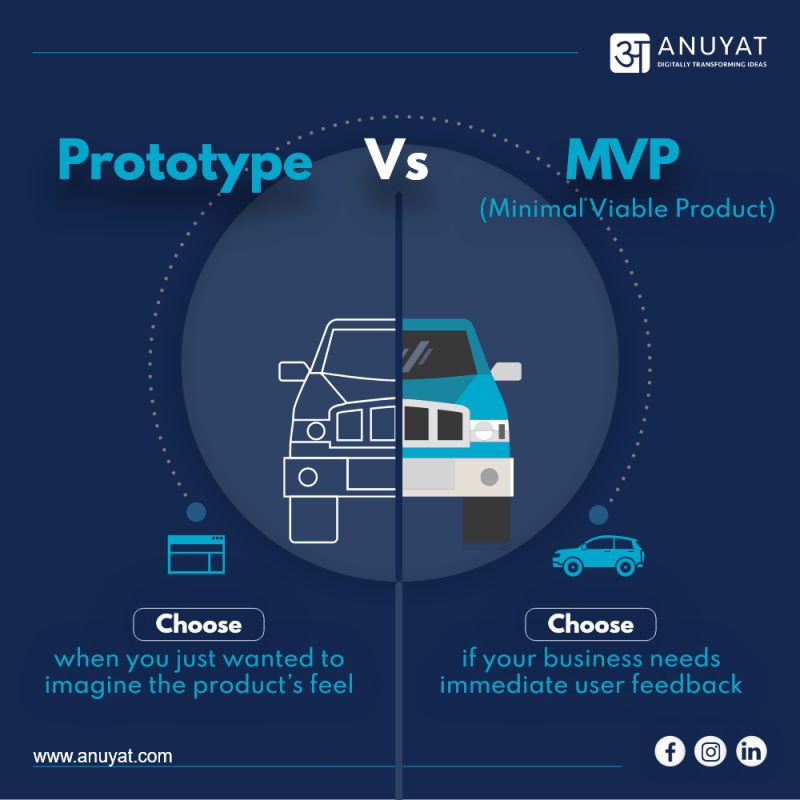
But as mentioned, they are conjoined; hence, the development of a Minimum Viable Product (MVP) builds a prototype of a digital application that actually works, has the potential to meet your user's demand, is complete, and can get scaled with new features.
Why is MVP popular?
MVP concept is gaining popularity with each passing financial year just because it resembles the true nature of business – build what people want.
In the earlier era of product manufacturing, businessmen used to build what they “thought and felt” is needed by the masses without asking what the masses wanted. But this era is more about consumers & solving their problems at the micro-level.
MVP plays the role of agony-aunt here. It listens to its users’ application needs, builds a minimum solution for it, provides them with a trial, and gets feedback for better.
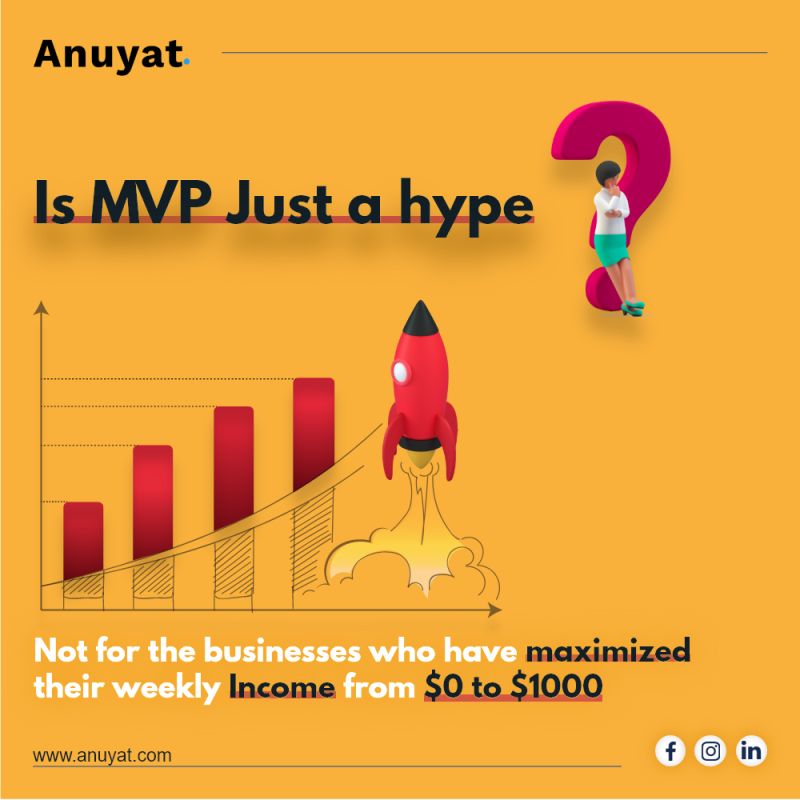
History tells us the success stories of the MVP and hence, the love for it; how Zappos started with MVP & was able to attract Amazon to acquire it for $1.2 billion while continuing to work as an independent entity.
The benefits of MVP for a startup or a new product can be summarized as under:
- Easy to win stakeholder/investor trust
- Quick testing of business concepts
- To verify market demand
- Helps in developing a monetization strategy
- Aids in testing UX and its usability
- Provides cost-efficient product development
What to do after the launch of MVP?
MVP launch is an exciting time, and now all the efforts are concentrated on market feedback and monetization.
At the MVP development side, the team is ready to provide post-live support for bug fixing, product enhancement, and troubleshooting.
Here is a quick checklist for efforts after the launch of MVP:
- Communicate your marketing efforts to the targeted customers only.
- Define and monitor key parameters of your marketing efforts, such as downloads, subscriptions, etc.
- Setup an easy channel for feedback over the MVP.
- Reach out to personal connections on the social media channels for more trusted feedback.
- Spend at least 4-6 weeks in the feedback gathering process to get the relevant information regarding marketing efforts and product enhancement.
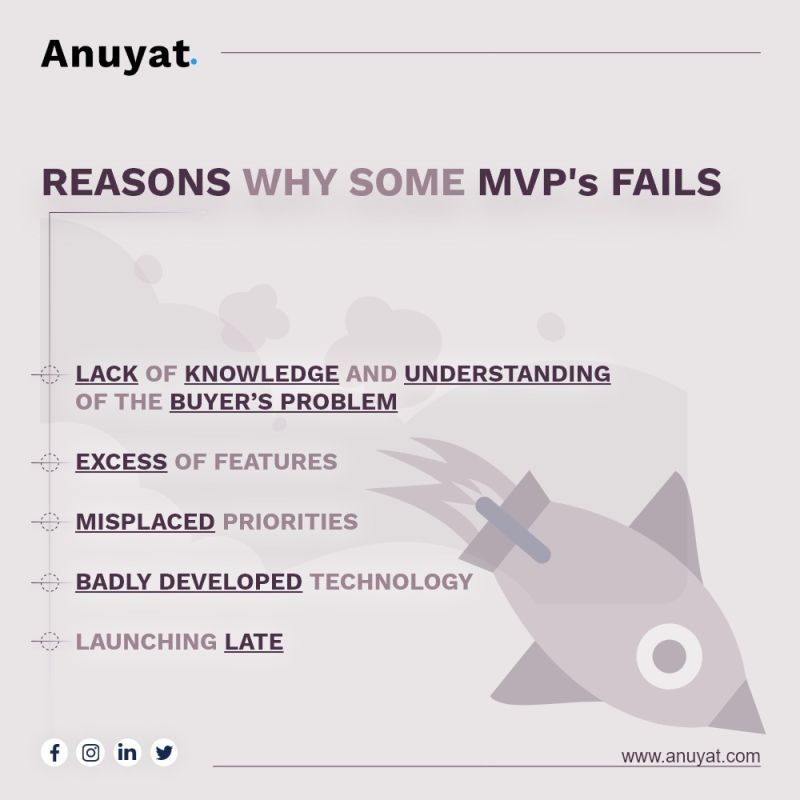
Minimum Viable Product for our clients
Anuyat was founded with the mission to provide efficient digital solutions to startups and enterprises, and MVP service is our one way towards this journey.
Since our inception, we have successfully implemented 80+ MVP solutions in various industries – healthcare, Ecommerce, Education, Fintech, Telecom, Real-Estate, and counting.
Read the clients’ success stories for more learning.
How Much Does MVP Development Cost
A common misconception is that MVP development is an additional cost to building a digital product. Let us discuss this.
When we say the cost of anything, it is not just the currency numeral attached to it; there is more than that:
- The time versus cost.
- The future value versus cost.
- And also, the ROI versus invested cost.
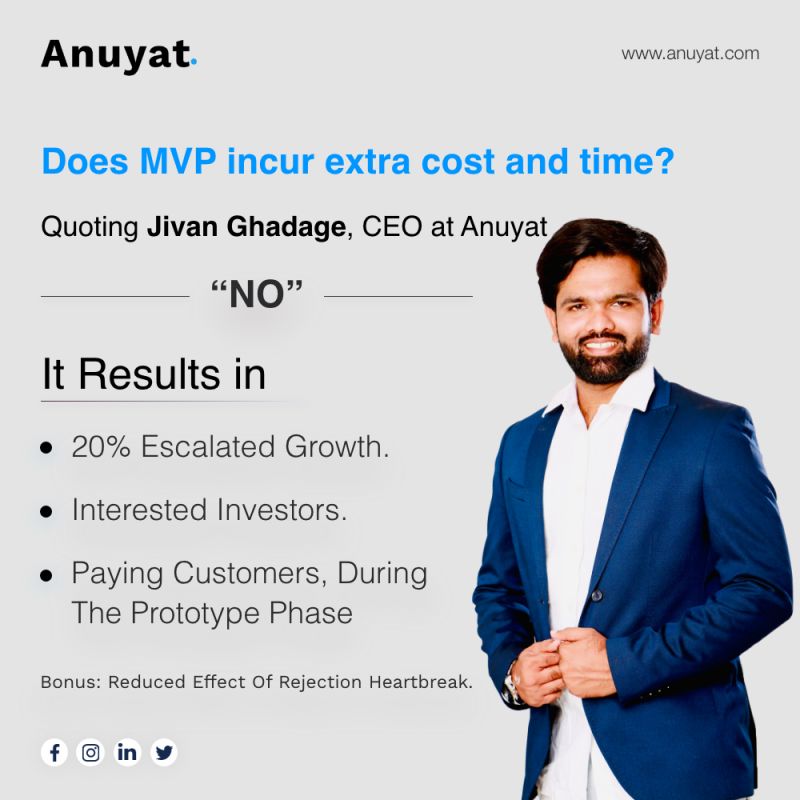
The point is, while considering the cost of the MVP development, consider the above points as well.
The main question is: What is the ongoing fee of developing an MVP?
To build an MVP for a Startup or Business, the cost can range between $15,000 and $50,000. It can cost either higher or lower, depending on the following factors:
- Type of application
- Designing cost of MVP
- Preparing for design
- Wireframing MVP
- On-page interaction
- In-house, outsource, freelance, or local team Development
How is the cost of MVP justified?
The biggest challenge for any startup or early founders is to understand why some MVPs can be built in $15000 while for others, the evaluation crosses the $50,000 price mark, based on the factors mentioned in the last topic. Understand this:
MVP development is much more than developing an application to solve the customer’s problems; there are other co-dependent things entrepreneurs need to settle
- How are they going to market the product?
- What type of investment do they need on the marketing side?
- What type of investment would they need in its sales promotion?
Usually, people fail to do the basic survey to understand whether there is a product-market fit for their idea.
Having said that, an MVP investment of $15,000 is expensive and not justified if the MVP is not taking care of the above co-dependent things -marketing, sales, user research, product development, and then deploying the product to the end-users.
And one can happily justify the investment of $50,000 in the development of MVP if it is achieving the purpose of its existence. This is something to think about.
MVP approach is the most appreciated process by startups or established businesses who have a new idea for the product.
Feel free to reach us for more personalized queries regarding MVP development.
+91 99 666 08713
+91 72 189 72725
getanmvp.com is an effort from Anuyat.com to help entrepreneurs understand the dynamics of Minimum Viable Product and what it takes to build a product-market fit out of their digital ideas.
Anuyat is a Pune-based company and offers Technical Consultancy, User Experience Engineering, DevOps Solutions, Mobile & Web Applications and of course, MVP.




